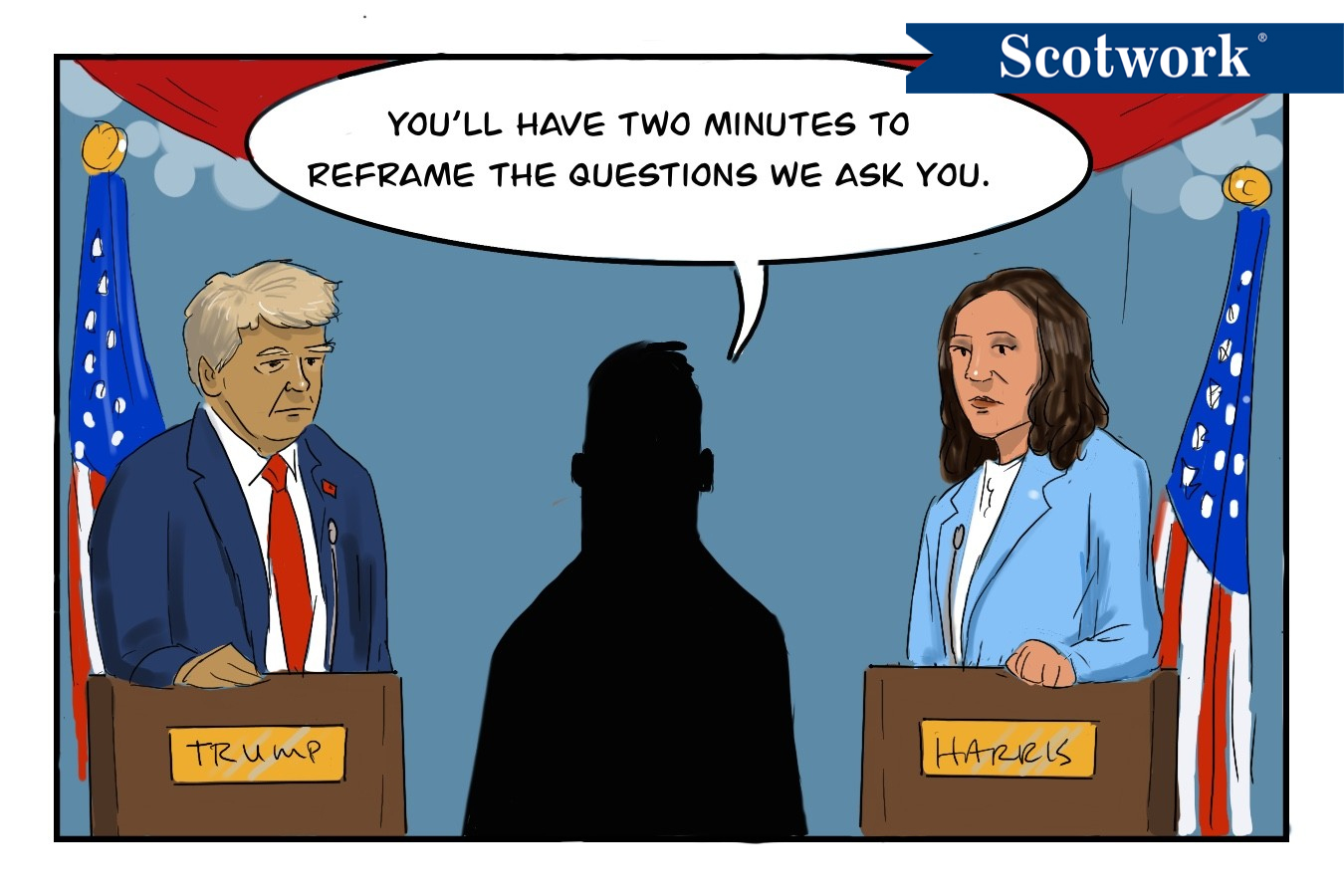This has been one of the most unconventional presidential races in recent history. Given the outcome of the last debate, the upcoming one will have a lot riding on it. Beyond political theater, it’ll showcase a critical skill that applies well beyond the campaign trail: the art of framing. In presidential debates and business negotiations, the way arguments are framed can significantly shape perceptions, influence outcomes, and determine success.
Framing is a communication technique that involves presenting information in a way that influences how the other party perceives it. It’s a form of persuasion. In negotiations, framing can allow you to position ideas, proposals, and arguments in a way that helps you control the narrative in your favor.
A presidential candidate might frame an economic policy as a solution to job creation or lower inflation, even if it has broader implications for taxation or government spending. A negotiator can do the same by framing a proposal to appeal more to the counterpart’s needs or by framing an issue into a problem they can easily solve. It’s about emphasizing the points that most benefit your side while downplaying points that undermine your position.
While framing is about presenting your own argument effectively, reframing is about responding to the other party’s position by changing the focus or context. In debates, candidates often face criticism or tough questions, and the best debaters are skilled at reframing those attacks to their advantage. Instead of getting defensive, they pivot the conversation toward a more favorable topic.
In business negotiations, reframing can be equally powerful. If a counterpart raises an objection — such as the price of your service — you can reframe the issue by focusing on the total cost of ownership, emphasizing long-term savings or superior customer support. Reframing allows you to shift the conversation away from potential negatives and steer it toward aspects that align with your goals.
To use framing and reframing techniques effectively in your negotiation, there are a few things you need to consider . . .
- Understand your audience. Presidential candidates tailor their messages to appeal to different voter segments. Similarly, in negotiations, it’s essential to know what matters most to the other party. If they prioritize cost, frame your offer as a value-driven, cost-effective solution. If they care about innovation, highlight your product’s cutting-edge features.
- Control the narrative. Candidates often steer debates back to their core strengths, regardless of the question asked. Keeping the conversation focused on your strengths is also a powerful negotiating technique. If your counterpart raises an objection, don’t get sidetracked — reframe the issue to bring the discussion back to your main negotiation points.
- Stay flexible. In a debate, being rigid can hurt a candidate’s appeal. Likewise, in negotiations, flexibility is key. If the other party raises unexpected issues, be ready to adapt your framing and reframe the discussion. The ability to pivot and refocus the conversation shows not only confidence, but also an understanding of the bigger picture.
Successfully utilizing framing and reframing techniques can be a game-changer in negotiations. Just as presidential candidates craft their messages to sway voters, negotiators can shape the conversation to sway the other party. Framing helps you set the agenda, while reframing allows you to handle objections with finesse and turn potential negatives into positives.
As I watch the presidential debate unfold, I’ll be looking for how often framing and reframing occur. My prediction is that I’ll lose count because it happens so often. However, I can be sure about one thing: The candidate who excels at framing their arguments will have an advantage. The same holds true at the negotiating table: Those who understand and use framing effectively can better steer conversations, address objections, and ultimately stay in control of the negotiation.
We Can Help You Use Framing and Reframing to Control Your Negotiations.
Negotiators who effectively use framing and reframing techniques can better steer conversations and, ultimately, control their negotiations. Rely on Scotwork’s nearly 50 years of experience to steer your negotiations to their best possible outcomes.

